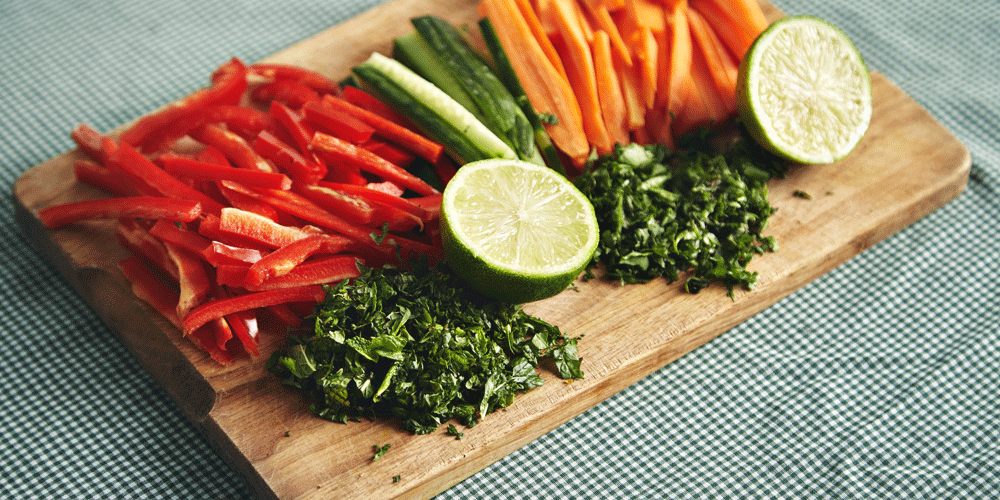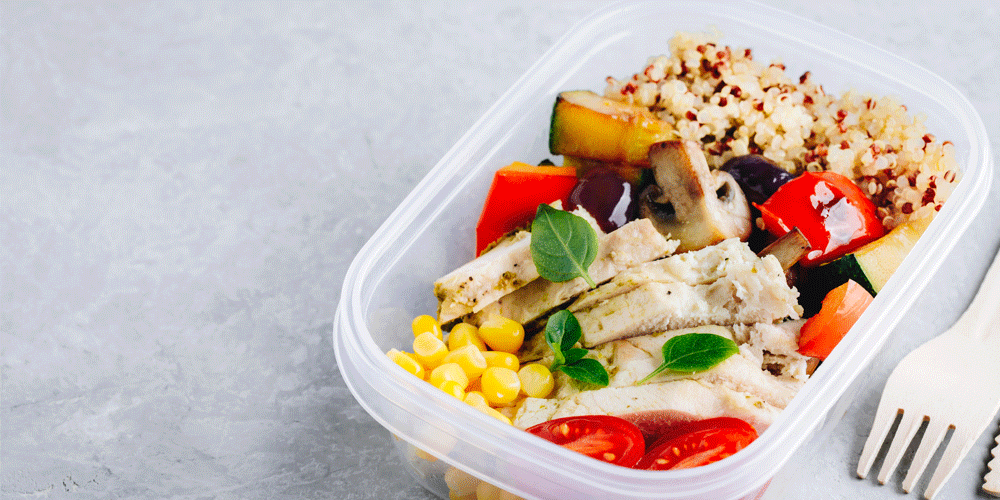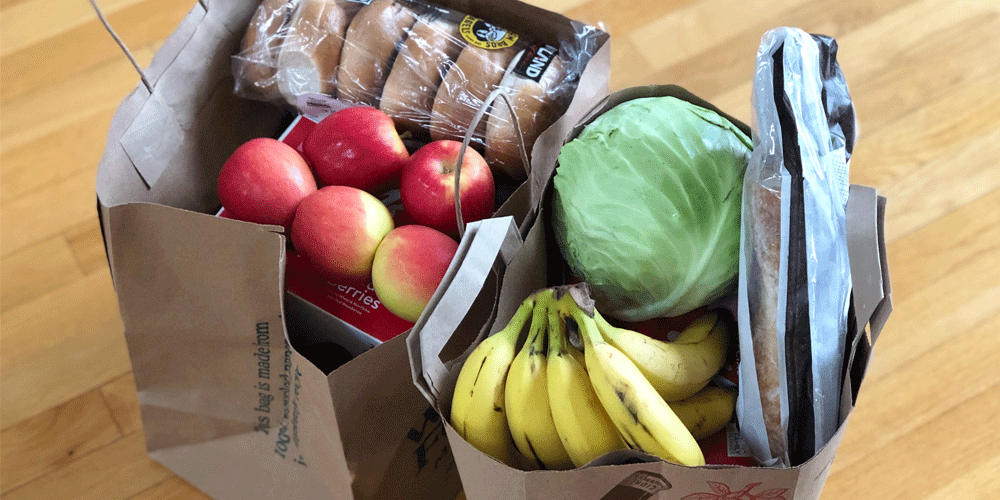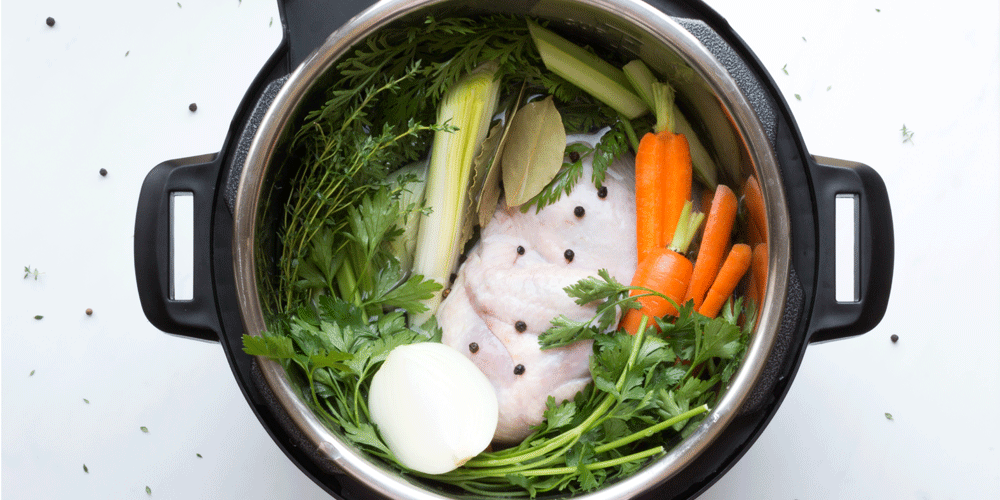Cooking in a Semi-Truck [Plus Truck Driver Meal Prep Tips]
Adelaida has been an over-the-road truck driver for more than five years. She has worked with ATS as a company van driver for two years.
The CDC reports that over-the-road (OTR) truck drivers are more than twice as likely to be obese when compared to non-drivers.
That’s a frightening statistic.
Coupled with the inability to get much physical activity on the road, obesity can increase your chances of developing life-threatening diseases, including heart disease and diabetes.
Truck stops don’t always offer the healthiest options for drivers — it’s a sea of hotdogs, pizza and nachos — and drivers are forced to grab a quick option full of sodium and fat to ensure they get something in their stomachs to fuel them for the rest of their drive.
Eating on the road for every meal can really add up. You may find yourself eating your paycheck instead of sending it home or using it to boost your savings.
It takes mindfulness on behalf of the driver to stay healthy out on the road. Failing to focus on your health can result in the development of illnesses or health diseases that can keep you off the road per Federal Motor Carrier Safety Association (FMCSA) regulations.
I’ve been a long-haul truck driver for nearly a decade and have spent the last few years with Anderson Trucking Service (ATS). When it comes to food and eating on the road, I’ve done it all. I’ve spent my money on truckstop food for each and every meal. I’ve tried cooking my meals ahead of time and putting them in my truck. I finally settled on prepping my ingredients so that I can cook in my truck every day. I’ve gone from spending as much as $250 on the road each week to only spending as little as $40. And I’m a lot healthier too.
Learn about how you can not only cook in your semi-truck but how you can save money by doing so. I’ll teach you about must-have cooking appliances, what kind of food you should keep in your truck and the cooking hacks I swear by on the road.
Cooking in a Semi-Truck vs. Meal Prepping
If you want to save money on food as a truck driver, there are a few ways you can do it. Some drivers prefer to meal prep — cooking everything during home time and packing it into containers to take on the road — and some drivers like to cook on the road.
Whether you decide to meal prep or cook on the road comes down to personal preference, space and length of time on the road.
Do you prefer cooking in your truck or meal prepping?
Some drivers simply don’t want to spend their mornings and evenings cooking in the truck. Some drivers don’t like to cook much at all, much less in a limited space. So, they may decide to cook a bunch of meals when they’re home for a few days. They may freeze them in containers so it’s easy to pop them in the microwave when they’re hungry.
Other drivers — myself included — may want that taste of home on the road, so they’ll decide to cook every night.
If you do decide to meal prep, you can make it easier on yourself by prepping a large batch of core ingredients, like grains and proteins. Then, switch up the vegetables and seasonings for each meal. For instance, you could make a large batch of chicken and rice, then swap out veggies. By doing this, you'll still enjoy food variety without making countless different recipes that require a lengthy grocery list.
How much food storage space do you have in your truck?
It also comes down to space. How much refrigerator and freezer space do you have in your truck? Food storage containers can take up a lot of space. I found that, in my truck, I could only fit about a week of meals in my fridge. Then, for the rest of the time that I was out on the road, I’d have to buy meals at truck stops.
Because of that, I started cooking my meals. However, you might have more room to play around with in your truck.
If space is an issue for you, meal-prepping all your ingredients at home and cooking on the road might be the best option. You’ll save the most money — upwards of about $200 per week — and you’ll save space.
Prepping ingredients and placing them into storage bags to either freeze or place in your fridge will help you get weeks of meals packed into your cooler space.
How long are you out on the road?
If you only spend a week out on the road, meal prepping might work for you. But for someone who spends several weeks on the road at a time, as I do, it might not be feasible. You may not have enough room to store more than a week of meals in your truck and meal-prepped food could spoil before you have the chance to eat it. As a result, you may need to buy meals on the road anyway.
No matter what you decide — to meal prep at home or cook in your truck — you’ll still be saving more money than you would be if you ate every meal of the day out on the road.
How to Cook in a Semi-Truck: 3 Steps
If you want to cook on the road, make sure you have the power required to do so. An inverter and an auxiliary power unit (APU) work together so you can easily operate all your appliances. An APU allows you to use your bigger appliances without requiring your truck to be on. This will save you money by cutting back on idle time and fuel expenses.
The appliances you do use should be lower wattage so that they don’t use too much power at once and prevent you from using anything else.
If you’re leasing your truck, there may be certain appliances you aren’t allowed to use in the truck, so make sure you aren't violating your lease agreement.
Step #1: Prepare Your Ingredients
Cooking on the road takes a little bit of planning ahead. Plan out the meals you want to eat for the next few weeks on the road so you can pick up all the ingredients when you’re at home.
Keep it simple: Protein, veggies and some type of grain will keep you satisfied for lunch and dinner. For breakfast, you can opt for an easy option like oatmeal or cereal, or cook something like bacon and eggs.
Healthy snacks for truck drivers, like fresh fruits and vegetables, nuts, trail mix and protein bars, are easy to grab. You can either cut fruit in advance and place it into storage bags or grab fruit that doesn’t require cutting, like oranges, apples, bananas and berries. You can also save money by making your own trail mix.
Buy your meat in bulk — or a protein alternative if you're vegetarian/vegan — and cut it into smaller portions. Place each serving into a sealable plastic bag. Do the same thing with your vegetables. If you like to eat rice or another grain with your meals, you can easily bring a larger bag with you and portion out servings each day.
Pay attention to sales when you’re purchasing ingredients at the grocery store and try to eat seasonally. Eating produce when it's in season will save you a lot of money in the long run as compared to buying it out of season.
When you get into your truck for your next run, all your bags of prepared meats, veggies and fruit should stack nicely in your fridge and freezer.
Step #2: Cook It
Each morning, decide what you want to eat that day. Perhaps you want a meal in the slow cooker, you want to make lunch on your portable stove or you want to cook with your electric skillet at dinnertime.
As you sip your morning coffee, plan out your meals and prep your ingredients if needed. For instance, move your meat from your freezer to your fridge to let it thaw so it’s ready to cook later in the day.
If you’re cooking with a slow cooker or a portable stove, you’ll be able to toss your ingredients in a pot and forget about it until it’s ready. Just be sure that you have your stove or slow cooker in a secure spot so it can’t spill or go flying while you drive.
A TV tray — or equivalent — is a great, affordable purchase that'll give you prep space. Keep a cutting board in your truck, too. It gives you even more space to prep. You could also lay tinfoil down on surfaces to protect them.
Be sure you keep all your favorite spices in your truck with you so you can always season your food as liberally as you desire.
Then, do your thing and get your chef on! With all the food cut and prepped, it should just be a matter of dumping and flipping a few things before you’re ready to have a great meal. A few handy tools, like a can opener, spatula, knife, tongs and stirring spoons will help you get the job done easily.
Step #3: Clean It
Keeping your truck clean is crucial when you’re cooking for yourself on the road. Make sure you have disinfectant with you — whether you keep it in a spray bottle with a rag or you carry wipes. Clean your hands after you handle raw meat, along with the surfaces it touches. The last thing you want while on the road is a bad case of food poisoning.
Disposable plates and cutlery make clean-up easy. You can buy these in bulk and store as many as you need in your truck. A food storage container or two will come in handy in case your eyes were bigger than your stomach and you have leftovers.
If you prefer an eco-friendlier option, keep a plate, utensils, and bowl with you that you can wash every night.
You can clean your dishes with disinfecting wipes and then wash them off in the truck stop. You can also choose to bring a few gallons of water with you and some dish soap and wash your dishes outside your truck with a scrub pad and dry rags.
And be sure you have lots of paper towels in your truck!

Must-Have Truck Driver Cooking Equipment
If you’re cooking on the road, there are some tools you simply cannot go without. They’ll not only make the job easier, but they’ll allow you to cook a variety of foods in different ways. The top cooking equipment for drivers includes:
- Small slow cooker
- Electric skillet
- Portable stove
- Microwave
- Small air fryer
- Coffee pot
- Disinfecting wipes
- Disposable plates
- Cooking utensils (spatula, tongs, spoon, etc.)
- TV tray
- Cutting board
- Spices
- Cooking spray
- Paper towels
- Storage bags
Multi-purpose appliances, like a pressure cooker, boast multiple cooking capabilities and save tons of space in your truck. Invest in multi-purpose appliances if you can and your trucking carrier allows it — you’ll be happy you did.
Depending on the food you enjoy most, you may also want to invest in a small single-serving blender, a grill (for those lazy Sundays on the road when you get to the truck stop early and want to hang out outside your truck while grilling up some burgers), a mini waffle maker and a toaster oven.
When bringing pots and pans, try to bring as few as possible to save space.
Packing a wide array of spices will give you plenty of flavor variety — especially if you’re sick of eating the same meat/veggie combo every night.
Also, consider that there will be some nights when you simply don't feel like cooking a gourmet meal, but you also don’t want to spend money at a restaurant. Pre-made meals, like canned soup and chili or pasta and rice pouches, can be easily stored in your small food cabinet for a quick meal that doesn’t cost you a lot.
Save Money on the Road
There are some upfront costs associated with cooking on the road, but it will be well worth it in the end when you save nearly $1,000 per month on food. Shop smart by checking out local deals and comparing them to online retailers. You will find that you can get a lot of what you need for not a lot of money.
You’ll not only be taking more money home every month, but you may also notice an improvement in your health if you cut back on eating processed foods every night at the truck stop. Plus, cooking every night will give you a taste of home, and it might even be soothing for you after a long day on the road.
If you’re looking for even more ways to save money and maximize your income, we’ve made a handy list.
![Cooking in a Semi-Truck [Plus Truck Driver Meal Prep Tips]](https://blog.drive4ats.com/hubfs/Meal-Prep-Featured-80.jpg)



